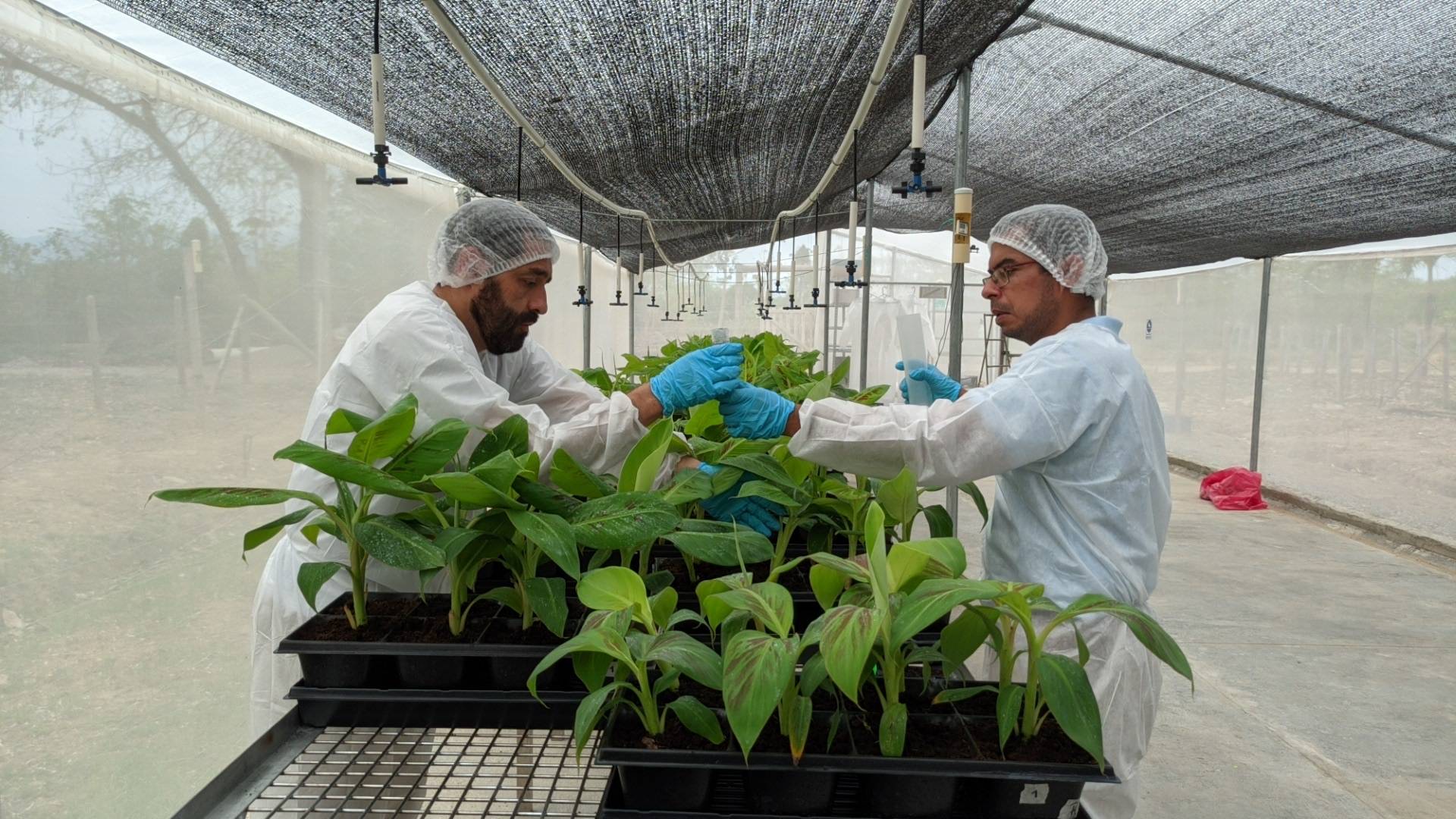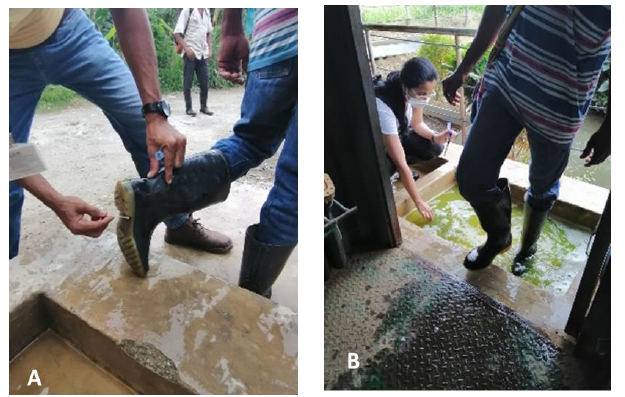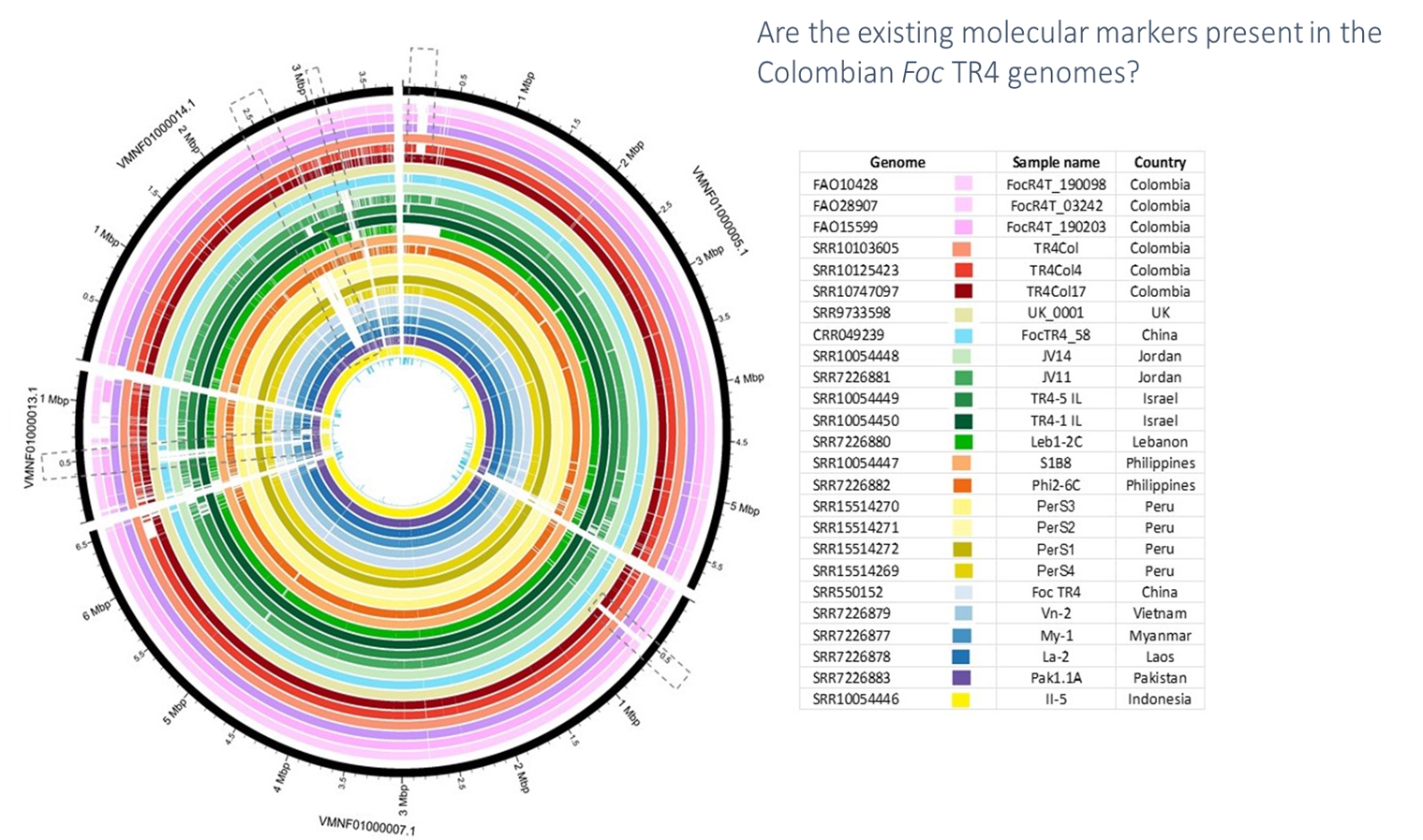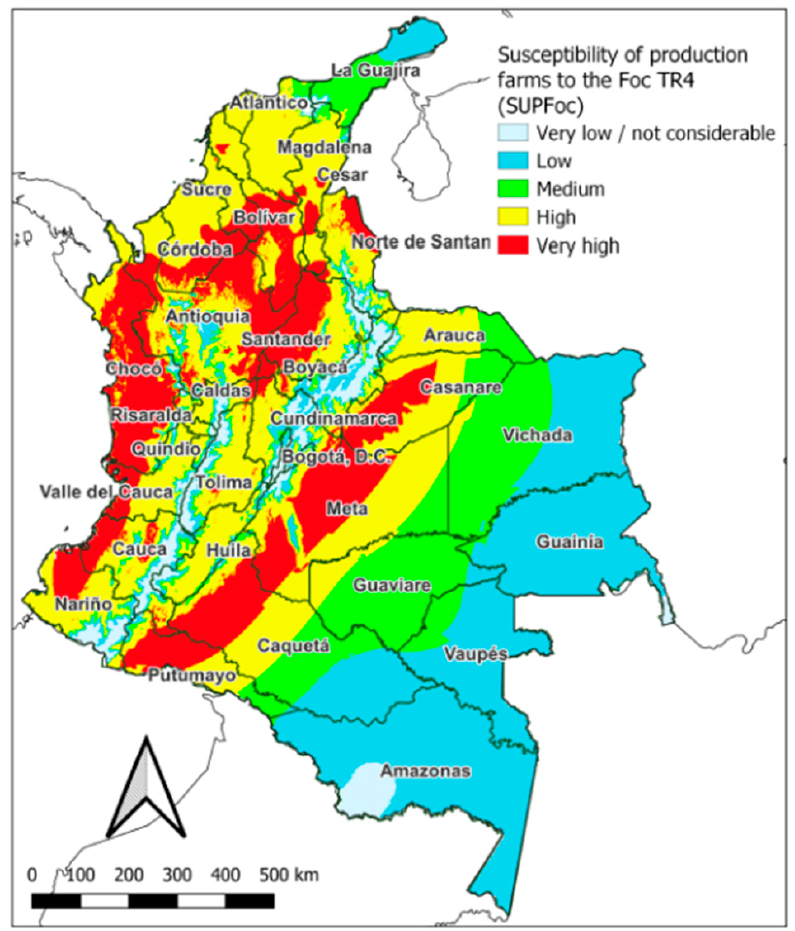Take advantage of the advances in the construction of scientific memory to prevent and confront the threat of Foc TR4 in the Region.

Starting in 2019, with the first report of Fusarium Tropical Race 4 (Foc TR4) in Colombia, Latin America, and the Caribbean, alarms were raised to prevent the spread of this disease, which has devastating potential for the banana industry in the region. We will present a timeline of scientific production within the framework of the Fontagro project:
2021 Agrosavia researchers Mauricio Soto-Suárez, Mónica Betancourt, Luisa Izquierdo, Sandra Carmona, Paola Zuluaga, Gustavo Rodríguez and CIAT - Bioversity Alliance Researcher Miguel Dita published the "Efficacy of Disinfectants against Fusarium oxysporum f. sp. cubense Tropical Race 4 Isolated from La Guajira, Colombia" (Available here). This work evaluated the effectiveness of 11 locally available disinfectants that can limit the spread of Foc TR4. Recommendations were presented on disinfection efficacies against Foc TR4 in absence or presence of soil.

2022 Paula Reyes, Eliana Torres, Diana Lopez, Diana Burbano, Sandra Carmona, Daniel Bebber, David J. Studholme, Monica Betancourt, and Mauricio Soto-Suárez in collaboration between the National University of Colombia, the University of Exeter (United Kingdom) and Agrosavia, performed a comparative genomic analysis among 22 TR4 isolates from different countries. Our results reveal that the Colombian and Peruvian isolates are genetically distant, which could be better explained by independent incursions of the pathogen to the continent. The document is available at this link.

2023 was the year when researchers from the Fontagro Foc project shared their research results on predisposing factors, identification of the susceptibility of Colombian lands to Foc TR4, and the evaluation of droplet digital PCR for detection of Foc TR4. In the first work, Gustavo Rodríguez, Barlin Olivares, Antonio González, Rommel León, Juan Camilo Gómez, Marlon Yacomelo, Francisco Carrascal, Elías Florez, Mauricio Soto-Suárez, Miguel Dita and Mónica Betancourt identified the relationship between acidic pH, low organic matter contents, low cation exchange capacity, low natural fertility and low hydraulic conductivity with greater spread of the disease. To know more details about publication enter the publication click here.
On the other hand, in a collaborative work between Agrosavia, the Central University of Venezuela, the Agrovid SAS Group, and the University of Córdoba (Colombia), a susceptibility map Colombian lands to Foc TR4 was constructed, in which the researchers analyzed at the same time different variables, such as, climate, soil and the density of musaceae crops to determine critical points of intervention.

At the laboratory level, Agrosavia researchers Andrea Lovera, Edwin Rodríguez, Jaime Simbaqueba, Diana Burbano, Sandra Carmona, Luisa Izquierdo, Juan Gómez, Rommel Leon, Madeleyne Parra, Gustavo Rodríguez, Mónica Betancourt, Paola Zuluaga, and Mauricio Soto- Suárez evaluated conventional PCR, Quantitative PCR and [dd] PCR to demonstrate the usefulness of some of these tools for the detection of Foc TR4 directly from macerated plant tissue without prior DNA extraction, detection in asymptomatic plants, environmental and recalcitrant samples, and samples with low concentrations of target DNA. To see the complete publication, access this link.
In 2024, we will work to continue generating and delivering knowledge to contribute in the protection of musaceae crops against TR4 in Latin America and the Caribbean.




